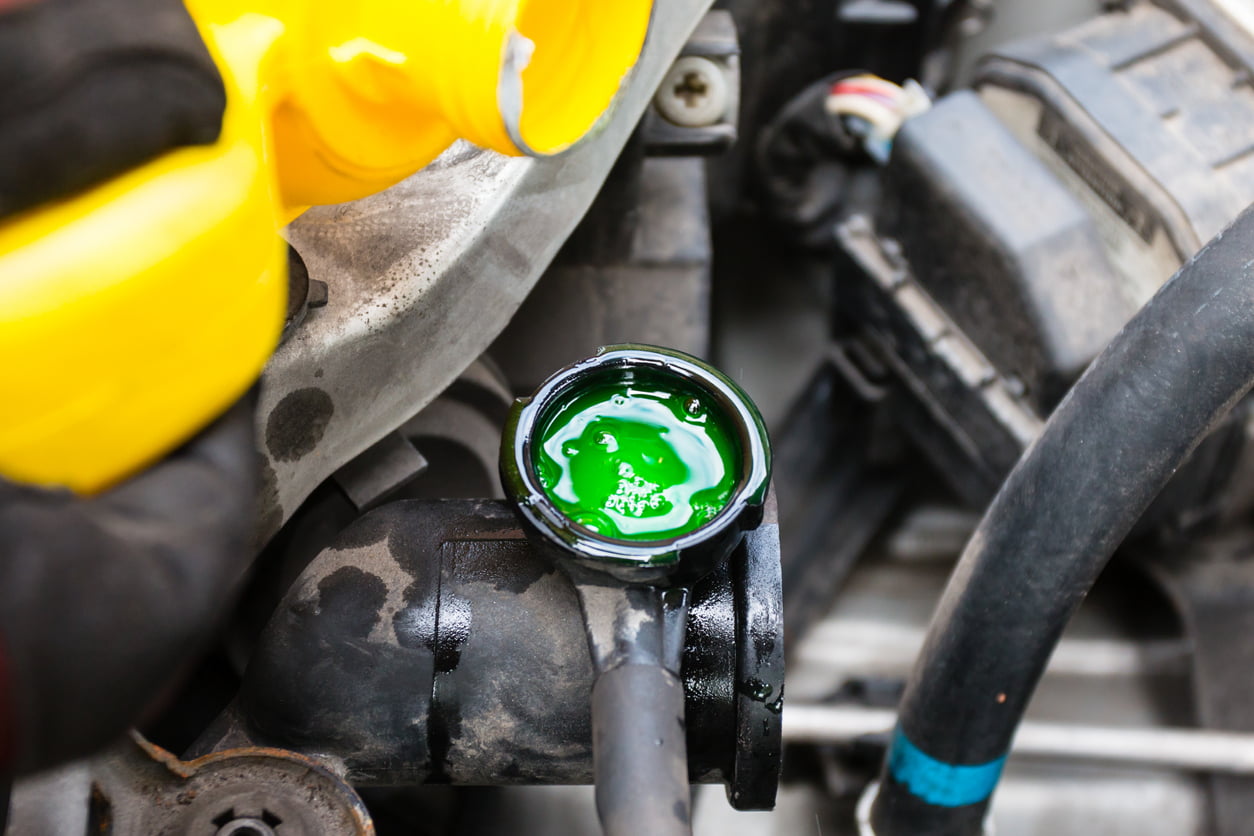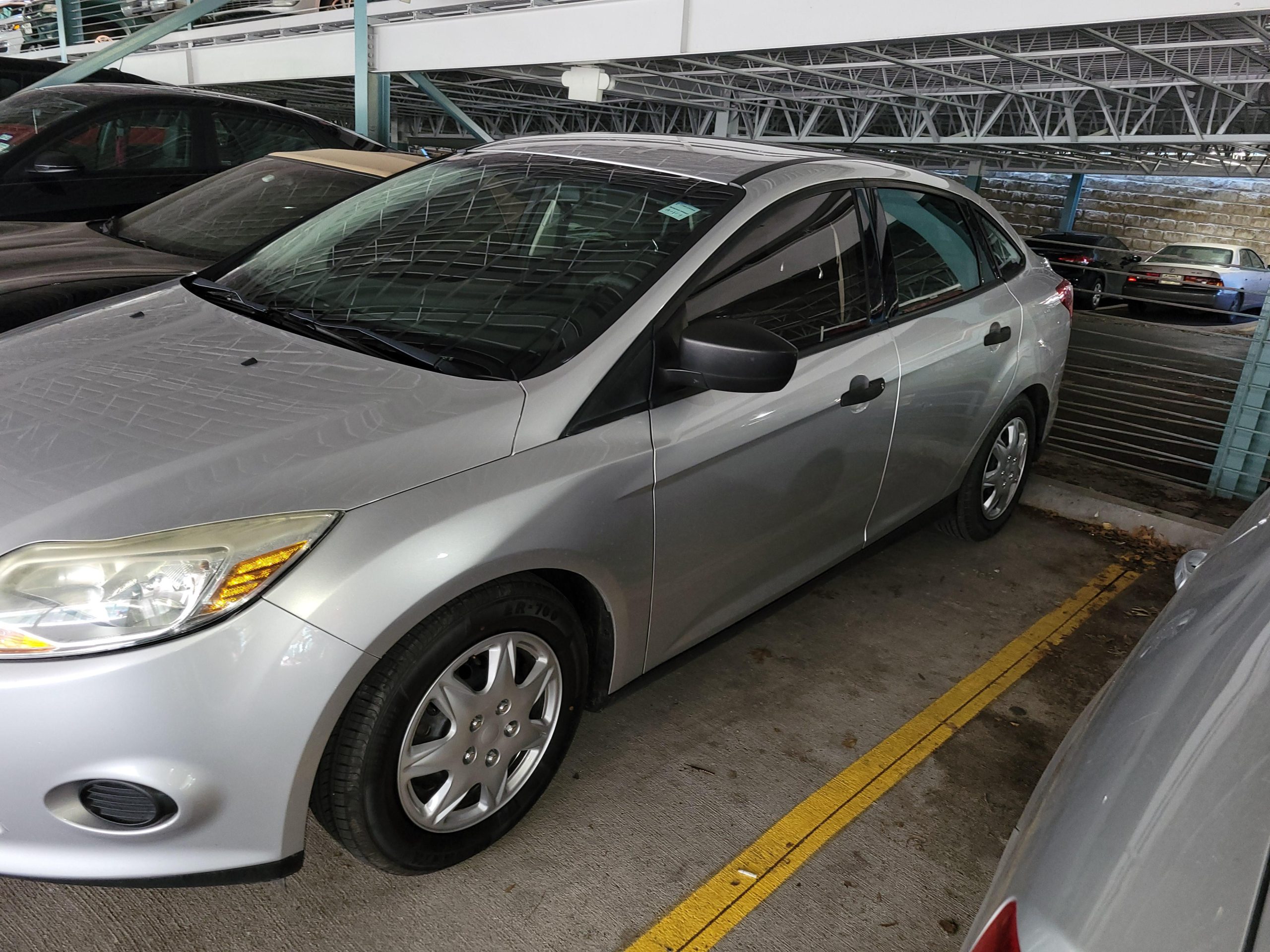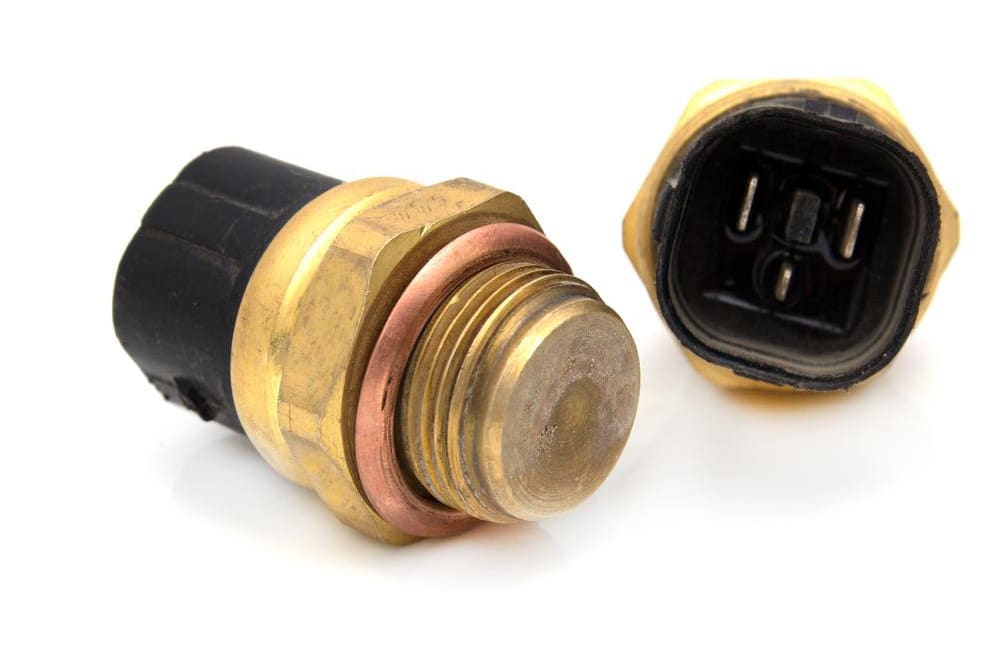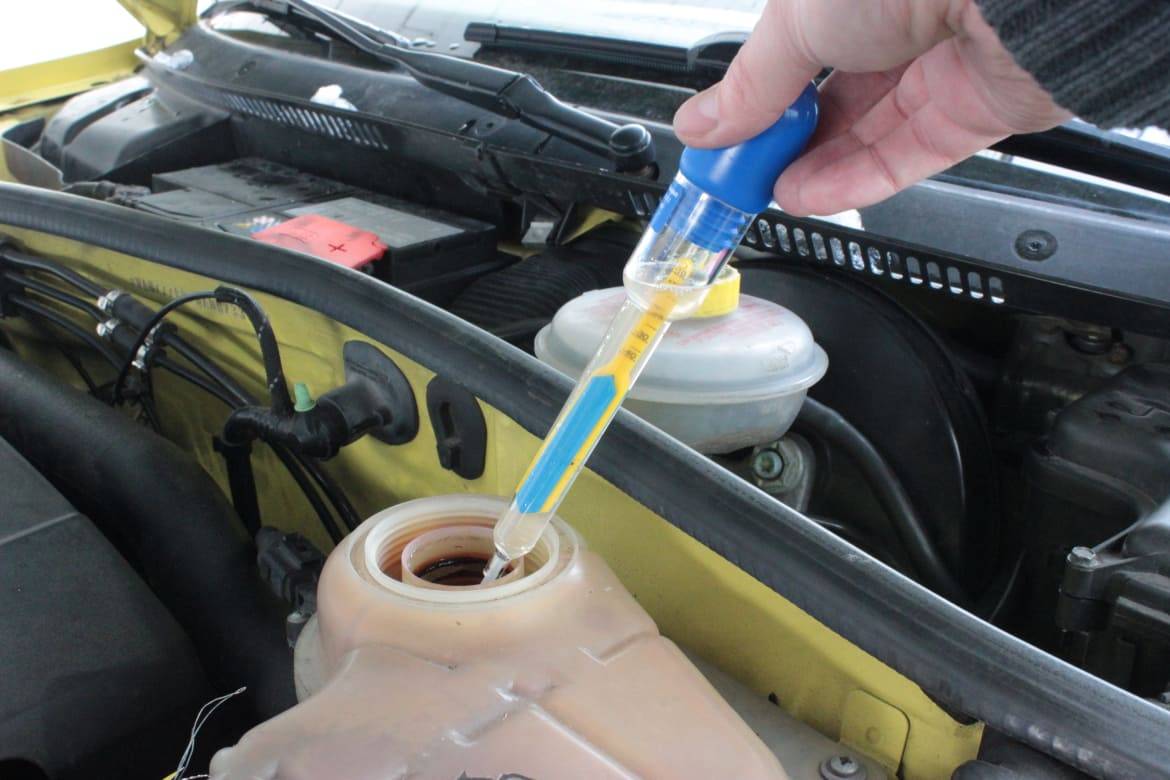Can You Put Coolant in a Hot Car
Yes, you can put coolant in a hot car, but it is generally advised to wait until the engine cools. Adding coolant to a hot engine can be dangerous due to the risk of burning yourself with hot coolant or steam.
Ensuring your vehicle’s engine is properly cooled before attempting to add coolant is an essential safety measure. A hot engine not only poses a risk of personal injury but can also lead to mishandling of the cooling system components. Your car’s cooling system operates under pressure, and adding coolant to a hot engine could trigger the release of this pressure, resulting in hot coolant spraying out and causing burns.
It’s best to wait for the engine to cool down, which typically takes at least 30 minutes. Given that your vehicle’s performance and longevity hinge on the proper maintenance of your cooling system, taking the time to do it right is crucial. Always consult your car’s manual for specific guidelines related to your particular make and model.
Risks Of Adding Coolant To A Hot Engine
Knowing when and how to add coolant to your car is crucial. Quick fixes might tempt you, but they can backfire. Let’s delve into the possible dangers of pouring coolant into an engine that’s still hot.
Thermal Shock And Engine Damage
Engines get extremely hot. Pouring cold liquid on hot engine parts leads to thermal shock. This causes metal to crack or warp. It’s like throwing ice water into a hot glass. The result? Cracks or even breaks. Here’s what you face with a hasty coolant refill:
- Cracked engine blocks: Metal expands when heated; cold coolant can cause it to contract sharply, leading to cracks.
- Warped cylinder heads: The part of the engine that seals the combustion chamber could distort, leading to leaks or engine failure.
- Seal and gasket failure: These components can also suffer from rapid contraction, resulting in leaks and costly repairs.
Potential For Burns And Injuries
Hot coolant is dangerous. Opening a radiator cap on a hot engine can release steam and boiling coolant. This spray can cause severe burns. Safety steps include:
- Wait for the engine to cool: This takes about 30 minutes and reduces injury risk.
- Use protective gear: Gloves and goggles are a must to shield yourself from hot liquids.
- Stand back: When opening the cap, keep your face and body away to avoid hot spray.
Rushing to add coolant can result in personal injury and engine harm. Always let the engine cool first. It saves the engine and you.

Credit: www.yourmechanic.com
Understanding Coolant And Engine Temperature Dynamics
The relationship between coolant and your car’s engine temperature is crucial. Think of coolant as a superhero for your engine. It fights against overheating. When your car works hard, its engine gets hot. Coolant saves the day by keeping the temperature just right.
How Coolant Works In An Engine
Coolant, also known as antifreeze, is a heat-transfer fluid. It absorbs engine heat and moves it to the radiator. Here’s how it works:
- Coolant travels through the engine.
- It picks up heat along the way.
- The hot coolant then flows to the radiator.
- The radiator cools the liquid down.
- Coolant cycles back through the engine.
This cycle prevents overheating. It helps maintain the perfect temperature balance.
Effects Of High Temperatures On Coolant Systems
When the engine gets too hot, coolant steps in to reduce the risk of damage. But there’s a catch. High temperatures can strain the coolant system. Here’s what happens:
| High Temperature Impact | System Response |
|---|---|
| Expansion of Coolant | Increases pressure in the system |
| Boiling Point Reached | Possible coolant evaporation |
| Overworked Parts | Increased wear and tear on hoses |
In extreme cases, a hot engine can lead to coolant boiling. Boiling could cause steam and pressure build-up. This situation can damage your engine or even cause it to fail.
Proper Steps To Add Coolant Safely
When your car runs hot, it’s vital to maintain engine health by managing coolant levels. But do you add coolant to a hot car? The answer needs careful steps. Let’s dive into the safe way to add coolant to your car’s engine.
Cooling Down Your Engine
Never open the radiator cap when your car is hot. The scalding fluid and steam might cause burns. It’s essential to wait for the engine to cool down. This process can take at least 30 minutes. Check the temperature gauge or feel the hood by hand. When it’s cool to the touch, it’s safe to proceed.
Checking Coolant Levels And Reservoir
To check the coolant level, first, locate the coolant reservoir. It’s usually a transparent container near the radiator. Check the indicator lines on the side of the reservoir. These lines display the minimum and maximum levels. If the coolant is below the minimum mark, you’ll need to add more. Remember to use the correct type of coolant. It must match what’s already in your car.
Use a funnel to prevent spills when pouring the coolant into the reservoir. Fill slowly until you reach the proper level. Don’t overfill, as this can cause new problems. After adding, replace the cap and close the hood. Lastly, start your car and allow it to run for a few minutes. Then, check the level again to ensure it stays consistent.
Alternatives To Topping Off Coolant When The Engine Is Hot
Alternatives to Topping Off Coolant When the Engine is Hot
It’s tempting to add coolant to a hot car. But it’s risky. The engine must cool first. Sudden temperature changes can damage it. Don’t worry, though. Other safe methods exist for cooling a hot engine. Let’s explore some alternative techniques.
Using Emergency Cooling Techniques
If a vehicle’s engine overheats, act fast with emergency cooling. Here’s what to do:
- Turn off the A/C. This reduces engine strain.
- Turn on the heat. It draws warmth away from the engine.
- Pull over safely. Let the engine idle, then shut it off.
- Wait. Give the engine at least 30 minutes to cool down.
Seeking Professional Assistance
Sometimes, it’s best to seek help. Here’s how professionals can assist:
| Service | Benefits |
|---|---|
| Diagnostic Check | Identifies the root cause of overheating. |
| Coolant System Flush | Cleans out old coolant and refills with fresh fluid. |
| Repair Work | Fixes any leaks or damage to the cooling system. |
A professional mechanic provides safe, long-term solutions. They use the right tools and expertise to maintain your car’s health and prevent future overheating issues.
Maintenance Tips To Prevent Overheating
Keeping your car cool is key for a smooth ride. Regular maintenance stops overheating. This means checking your coolant often. Never add coolant to a hot engine. Wait for it to cool down. Preventing a boiling engine saves time and money.
Regular Coolant System Checks
Consistent coolant check-ups keep engines happy. Set a schedule to check coolant levels. Stick to it. Make sure to inspect belts and hoses too. These parts can wear out. If they break, the engine gets too hot.
- Check coolant level monthly.
- Inspect for leaks or damage.
- Replace coolant every 30,000 miles.
Identifying Signs Of Cooling System Issues
Spotting problems early saves your engine. Know warning signs. Look for these:
| Sign | What It Means |
|---|---|
| Rising temperature gauge | Engine may be getting too hot. |
| Coolant light on | Possible coolant leak or low level. |
| Steam from hood | Cooling system is failing. |
Listen for strange noises too. If the cooling system has problems, you might hear grinding or whining sounds. Take quick action. Quick action avoids bigger issues.

Credit: www.jdpower.com
Frequently Asked Questions Of Can You Put Coolant In A Hot Car
Is It Safe To Add Coolant To A Hot Engine?
Adding coolant to a hot engine can be risky. It may cause the coolant to heat up rapidly and possibly erupt violently, leading to potential burns. Always let the engine cool before opening the radiator cap and adding coolant.
Can Topping Off Coolant Prevent Overheating?
Regularly topping off coolant can help prevent overheating. However, it’s important to check for leaks or malfunctioning parts if you’re losing coolant quickly. Consistent levels maintain optimal engine temperature.
How Do You Add Coolant To An Overheated Car?
Wait for the engine to cool before adding coolant. Slowly open the radiator cap with a cloth to release pressure. Pour coolant into the reservoir or radiator up to the appropriate fill line. Do not overfill.
What Happens If You Don’t Wait For Engine To Cool?
Not waiting for the engine to cool can lead to injuries from steam or hot coolant. It also risks damaging your car’s engine. Always wait to avoid potential accidents and ensure your safety.
Conclusion
Wrapping things up, adding coolant to a hot car carries risks. Always let the engine cool before opening the radiator cap. Safety is paramount when handling vehicle fluids. Regular checks prevent emergencies, securing your car’s health. Remember, patience is key for maintenance rituals.
Drive safe!






